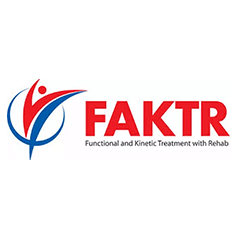Surprising Causes of Pain
Trying to understand pain when there is no obvious explanation
The world is full of unexplained pain. I publish a busy website about pain, and so I get email like this more often than I change my socks:
I’ve been to every medical specialist you can imagine. They can’t find anything wrong with me. The psychiatrist says it’s not in my head, and the rheumatologist says it’s not in my body. But something is causing my pain. It’s not an infection or a fracture or a cancer. It’s not a sprain or a pinched nerve or a cattle prod. What else is there? What else is left?
What else indeed? When “obvious” and known causes of pain have been eliminated, what next? What else causes pain? How else can pain start, change, worsen? This article summarizes some of the not-so-obvious ways to hurt, the things that might help you understand pain that has defied diagnosis or explanation so far.
Basic mechanisms, processes, and concepts (potentially relevant to many injuries or illnesses):
- Sensitization
- Chronic pain does not work like acute pain
- Psychological amplification
- Pain with literally no specific cause
- Muscle spasm, tension, contracture
- Referred pain
- The pain of stuckness
- Stupid, stupid neutrophils
- Chronic low-grade inflammation and “inflammaging”
- Idiopathic neuropathy, especially channelopathy
- Non-obvious nerve entrapment
And some specific pathologies (thing that can be diagnosed, and in some cases treated)…
- Trigger points
- Complex regional pain syndrome (CRPS)
- Myelopathy (spinal cord impingement, especially and probably intermittent)
- Claudication: the pain of impaired blood flow
- Ehlers–Danlos syndrome and the hypermobility spectrum disorders
- Nutritional deficiencies: vitamin D and magnesium
- Syphilis
- Early stages of …
- Facioscapulohumeral Muscular Dystrophy (FSHD)
- Autoimmune diseases
- Multiple sclerosis
- Lymphoma
- Drug related:
- Side effects (especially statins, bisphosphonates, fluoroquinolones, retinoids)
- Opioid-induced hyperalgesia
- Analgesic rebound
If I included every disease that causes aches and pains, this list would wrap around the Earth. I’ve narrowed it down to problems that are particularly notorious for both (a) evadingdiagnosis and (b) causing primarily aches and pains and other vague, non-specific symptoms (and not other symptoms that would easily lead to a diagnosis). Some of them are in a gray zone, of course.
Sensitization
Pain itself often modifies the way the central nervous system processes pain, so that a patient actually becomes more sensitive and gets more pain with less provocation. This is called “central sensitization.” (And there’s peripheral sensitization too.) Sensitized patients are not only more sensitive to things that should hurt, but also to ordinary touch and pressure as well. Their pain also “echoes,” fading more slowly than in other people.
Chronic pain does not work like acute pain
Chronic and acute pain are radically different. Chronic pain is not just acute pain that kept going. Over several weeks, the nature of pain changes. Unfortunately, we actually still don’t have a good understanding of how it changes. It probably involves a complex stew of the ideas in this article. For instance, sensitization (see above) is clearly a major factor. Emotional and physical stresses are strongly linked to chronic pain, but we’re not sure exactly how.
The “neuromatrix” theory of pain suggests that pain is produced by “widely distributed neural network in the brain rather than directly by sensory input evoked by injury, inflammation, or other pathology.”
Translation (and the important thing for desperate patients to understand):
Psychological amplification
Not pain that’s “all in your head” pain, but pain that is “aggravated by your head.” Sometimes the brain amplifies pain as a consequence of stress, anxiety, and fear. Like an ulcer, there can be a physical problem, but one that is also sensitive to your emotional state.2 Sometimes, the brain’s interpretation of a situation becomes a major part of the issue, or even the dominant factor — still not “all” in your head, but “a lot” in your head. Like picking at a scab, the brain can become excessively focused on a pain problem.
Pain with literally no specific cause
Like other complicated things in life, pain may not have any specific cause at all. Although we often speak of pain being multifactorial, we still tend to assume that just one of those factors is the specific cause of pain, and the others — sleep loss, stress, etc — are only piling on, making a bad situation worse. That picture may be wrong: some chronic pain is probably an emergent property of a big mess of synergistic stresses, with literally no specific cause. It may crop up only with an unholy combination of many factors.
This is a systems perspective on pain, and it overlaps substantially with sensitization — it’s basically saying that sensitization may be triggered by a bunch of different stresses — but it’s a different enough perspective to be worth considering separately. The idea of pain that truly has no specific cause is something more patients probably need to consider.
Pain without no one cause is a good news scenario in the sense that it might be treated by relieving enough of the contributing factors … but bad news in the sense that it may be like fighting a hydra.
“Spasms”: cramps, dystonia, spasticity, etc
Muscle tissue is everywhere — our most massive biological system — and its subtler hijinks can cause a lot of discomfort without giving itself away. No one has any doubt about the cause of pain when they get a massive calf or foot cramp, but not all cramps are so obvious, and there are other types of insidious, uncomfortable muscle contractions.
This is a broad category of trouble, which contains a number of specific examples, some of which are discussed below, like “trigger points” and the “multiple sclerosis hug” (spasticity of the ribcage). Using just wide brush for now, the types of unwanted contractions that cause the most trouble without being easy to diagnose are cramps, dystonia, spasticity. “Spasm” — as in a “back spasm” — is an informal and non-specific term that could be used to “explain” a lot of musculoskeletal pain, and could refer to any of the more specific types of pathological contractions.
Fun fact: if your muscles are contracted for long enough, they will actually “freeze” like that: essentially scarred into place, a phenomenon called “contracture.”
Referred pain
Anything that hurts inside the body — anything deeper than skin — is harder for the brain to locate. This is partly because we literally just don’t have enough nerve endings for it, and partly because the nervous system isn’t perfect and signals literally get “crossed.” The practical result of this is that internal pain with any cause may be felt somewhere completely different. Despite the fact that this phenomenon is well known, it still results in an amazing amount of medical barking up the wrong tree. Referred pain isn’t exactly a “cause” of pain, but it belongs in this list because it’s an important concept that can help to explain many pain problems that otherwise don’t make sense. For instance, both of the examples at the beginning of this article were cases where referred pain fooled doctors — in both cases, the pain was caused by a trigger point in a nearby muscle, notby vital organs. The doctors simply looked in the wrong place!
The pain of stuckness
Here’s a simple experiment: assume an awkward posture and stay there. How long can you last? Within an hour you will probably be in severe pain. Why? You haven’t actually damaged anything! But we seem to be wired to avoid stagnancy, probably because every cell in our body depends on nearly constant movement to survive. The exact mechanism of pain is probably nerve endings that detect tension on cartilage, ligaments, and tendons, and which in turn is interpreted by the brain as a surprisingly serious threat. But here’s the kicker: this effect is potent enough that it can be triggered without an obviously awkward posture. It can be caused by surprisingly subtle postural stresses (like from poor ergonomics), or anything that deprives tissue of full movement. When a joint feels “stuck,” for instance, and there is no obvious way (and sometimes no anatomical way) of moving to get “unstuck,” the sensation can escalate to a screaming itch-you-can’t-scratch. This is may be the main causes of neck cricks, for instance, and scads of other miscellaneous aches and pains.
Stupid, stupid neutrophils
Neutrophils are defender cells that are supposed to destroy bacteria that invade wounds, a normal part of the inflammatory response to injury. Bizarrely, neutrophils go to work even when the wound is sterile, not open to the outside world. Like an overzealous police force with nothing better to do, they also attack a common cellular organ, mitochondria, whenever it is spilled from cells by injury. Mitochondria are actually honoured symbiotic guests that convert our food to energy for us. Normally we live out our lives in perfect harmony with mitochondria, biological BFFs. But when they get the chance, neutrophils target and hunt them like they are invaders because for millions of years they haven’t gotten the evolutionary memo that mitochondria should be left in peace.
Inflammation often seems excessive because it is, because every trauma causes pain that is too loud for too long, because a significant portion of the inflammation is due to this SNAFU immune system policy of attacking mitochondria. There are many perverse sources of pain in pathology, but this one really stands out as being particularly ridiculous and unfair. It does have one practical implication: it directly suggests that it’s quite reasonable to try to control and limit inflammation with things like Voltaren® and icing. Contrary to the popular notion that inflammation is “natural” and therefore good, inflammation is definitely exaggerated, and could do with some controlling!
Chronic low-grade inflammation and “inflammaging”
Chronic, subtle, systemic inflammation is a possible factor in stubborn musculoskeletal pain. It can have many underlying causes, from bad genes to mild autoimmune disease (including allergies), smoking or other severe biological stresses, chronic infections, and even just getting old (known as “inflammaging”). The greatest culprit is metabolic syndrome: a set of biological dysfunctions strongly linked to poor fitness, obesity, aging, and likely emotional stress and sleep disturbance as well.
Idiopathic neuropathy, especially channelopathy
“Neuropathic” pain is the ultimate false alarm: pain caused by trouble with the nervous system itself. It’s the difference between engine trouble and trouble with that light on your dashboard that says there’s engine trouble. There are some quite blatant neuropathic pain problems, such as spinal cord impingement (discussed below), but humans also suffer from a surprisingly high rate of unexplained and/or subtle neuropathies, where the pain-reporting system is just kinda a bit wonky.
Specifically, a lot of this trouble may be driven by channelopathy, which is a poorly understood type of neurological trouble related to “dysfunction of ion channels located in the membranes of all cells and many cellular organelles.”5 In other words, poorly understood glitchiness at the very tiniest scale of biology. What it boils down to is that sometimes nerves “fire” for no apparent reason, causing all kinds of trouble, including false alarm pain.
This is probably not one disease. It’s likely that unexplained neuropathy has many pathological explanations, if only we could see them. “Channelopathy” will probably never be its own diagnosis: it’s just a likely but hypothetical type of problem that’s basically still beyond the power of medicine to deal with.
Non-obvious nerve entrapment
Usually when you have a pinched nerve, the symptoms are obvious: zinging “electrical” pain, tingling, and numbness are the signatures of a distressed nerve, or peripheral neuropathy. Unfortunately, peripheral neuropathy does not always announce itself so clearly. Sometimes all you get is pain. This predicament almost invariably leads to a wild goose chase for more “mechanical” causes of pain. Consider this remarkable case study of cluneal nerve entrapment…
The cluneal nerve pass from the low back and sacrum into the buttocks, just under the skin, and they can get tangled up with ligaments and connective tissue on their way, potentially causing chronic low back pain. In 2016, Aota reported on “a case of severe low back pain, which was completely treated by release of the middle cluneal nerve”. Exploratory surgery identified nerves “entrapped in adhesions.” They cut them free … and that was the ticket. The patient was decisively cured. Which is pretty cool. But that was after years of suffering, and a pointless surgery on her intervertebral discs.
As straightforward as that example is, it is also possible that her problem was not the nerve “snag” per se but a biological vulnerability to feeling it. It’s likely that nerve entrapments only cause trouble when combined with other hard-to-diagnose problems… like some of the other things in this article. No one really knows.
Muscle Knots
Most of us have some unexplained sore sports, which mainly feel like sensitive muscle tissue, but also tendons and ligaments. And some of us have a lot of them.
These are often called muscle knots informally, or “myofascial trigger points” more formally these days (and lots of other names through history). They seem to be involved in a lot of the world’s aches and pains. No one doubts that the sore spots, exist but hardly anyone agrees on what they are: their biology is still almost completely mysterious and contentious. Conventional wisdom says they are basically tiny cramps, but they might also be more of a sensory glitch. Regardless, they are often associated with strong pain that often spreads in confusing patterns (referred pain), and they grow like weeds around other painful problems and injuries, making them clinically interesting and tricky. Although they are well known to many specialists and researchers, most doctors and therapists know little about them, so misdiagnosis is epidemic.
There’s good news: as common and vexing as these sore spots are, many seem to be relieved by a bit of simple stimulation, by a little rubbing, like scratching an itch.
Complex regional pain syndrome (CRPS)
Most pain sensitization is simply a reaction to pain itself, a more-or-less normal, common, and reversible reaction to chronic pain. But it’s also possible for the pain system to spin out of control and severely over-react to stimuli because it’s “sick,” a disease in its own right. The example of this is complex regional pain syndrome, which causes extreme pain, usually in a limb, and usually following some relatively minor tissue insult like an insect bite, a minor cut, or a small fracture.
When it’s full-blown, the severity of this problem is impossible to understate (suicide is common), and yet there probably are milder variations of it. Many times in my career I have become quite convinced that a patient had to be suffering from some lesser form of CRPS, awful but not enough to clinch a CRPS diagnosis.
Myelopathy and dysautonomia
An irritated spinal cord — usually irritated by being slightly pinched by a narrow spinal canal — can cause an astonishing variety of problems, including pain, without ever clearly giving itself away. Symptoms can be in virtually any location in the body, if the location of the trouble is high in the spine. This can go on for years, bad enough to cause pain but never bad enough to be easily diagnosable.
Worse, there’s some intriguing evidence that “minor” irritation of the upper spinal cord may be uniquely problematic, causing “dysautonomia” — excessive sympathetic arousal, causing you to react as if stressed.8 This weird low-grade crazy-making effect is new and still uncertain, but it is nicely consistent with the much firmer, recent discovery that the autonomic nervous system is verydisturbed in the aftermath of major spinal cord injuries, causing organ failure — a clinical reality historically overshadowed by the seriousness of paralysis. Subtle dysautonomia from chronic mechanical irritation of the spinal cord is definitely a plausible, sinister, and thoroughly obscure explanation for some chronic pain and anxiety.
Claudication: the pain of impaired blood flow
Sometimes an artery gets narrowed or pinched off and causes serious pain. Although simple in principle, it tends to get missed in younger people, where it’s a relatively rare problem, and so the suspicion falls on other things. It also gets missed because “musculoskeletal” is a realm of medicine where circulatory function is rarely considered at all. But it should be an easy diagnosis: claudication tends to cause a deep aching pain exclusively with exertion (when tissues are demanding oxygen), which isn’t how most musculoskeletal problems behave. Here’s a good story about this kind of pain and its misdiagnosis …
A patient had sciatica-like leg pain for thirty-five years and was misdiagnosed many times until finally getting not only a definitive diagnosis but a cure.10 He had a narrowed artery (arterial stenosis causing “claudication,” the pain of impaired circulation). That’s it! Not even a difficult a diagnosis in the end, really. There were some pretty glaring clues there that got ignored by a lot of people who should have known better.
But not only was he misdiagnosed many times over more than three decades, he was misdiagnosed fashionably: that is, each misdiagnosis neatly fit a paradigm in physical therapy (better than it fit his symptoms). This carried on right up to and including the present day fascination with psychosocial factors and sensitization (which served him no better than any of the other paradigms had). Taylor and Kerry:
Interestingly, the patient’s belief that something ‘was actually wrong’ had remained with him throughout the journey. This, of course, had been explained away to him (more recently) by current research and evidence-based thinking on central sensitization and pain.
Just fascinating. The authors thoughtfully explore the implications of this rather shameful episode. The bottom line? Good diagnostic skills are never out of fashion. Or shouldn’t be, anyway!
Hypermobility spectrum disorders and Ehlers–Danlos syndrome
Hypermobile patients get hurt easily and have a lot of chronic body body pain. There are many types of hypermobility, with a wide range of severity, from trivial party trick flexibility in one or two joints (“double-jointed”) with no apparent consequences — especially early in life — all the way to full-blown genetic disorders of the connective tissue with many serious medical consequences. There’s a huge gray zone in the middle of under-diagnosed and under-treated people, who are definitely having problems but may never figure out why or what to do about it.
Hypermobility spectrum disorders (HSD) are a group of conditions defined by joint hypermobility — unexplained joint looseness. HSD is a bucket diagnosis for people with symptomatic hypermobility, but without a connective tissue disorder that explains it, like Ehlers–Danlos syndrome or Marfan syndrome. Most connective tissue disorders are relatively obvious, but EDS can easily evade diagnosis, making it a prime suspect in many cases of chronic pain…
Ehlers–Danlos syndrome (EDS) is a group of conditions that includes hypermobility along with fragile tissues that injure easily and heal poorly (especially skin), with manyconsequences. The most common form of EDS is hypermobile EDS (hEDS). It’s tricky to distinguish hEDS from HSD. However, hEDS is probably associated with serious rheumatic diseases (i.e. psoriasis, ankylosing spondylitis, rheumatoid arthritis)… and this is fresh science and very likely to be missed, “perhaps due to a lack of gravitas surrounding the HEDS diagnosis.”
Given the musculoskeletal troubles that we know hEDS can cause, it is reasonable to guess that less severe hypermobility (HSD) may also be both clinically important and yet even less obvious.
So, hEDS/HSD is serious … but it’s not taken seriously. Even doctors who know about hEDS/HSD usually assume that it’s mostly a minor condition, and would definitely not refer patients on to a rheumatologist.
Vitamin D and magnesium deficiencies
There is not a single supplement or anti-inflammatory superfood that is clearly beneficial for any common kind of pain, but there are a couple nutritional deficiencies that stand out as significant, legitimate suspects in many chronic pain cases. Pain may be the only clear symptom of either one.
Vitamin D deficiency is on the firmest ground. It is probably more common than once suspected — at least 1 in 20 people in the lowest estimates, and possibly many more.16 It can cause subtle widespread pain that may be misdiagnosed as fibromyalgia and/or chronic fatigue syndrome, including symptoms like muscle and bone aching, fatigue and weakness, lower pain threshold, and more acute soreness after exercise that is slower to resolve. For more information, see Vitamin D for Pain.
Magnesium deficiency is also a suspected factor in chronic pain, especially migraines. Some people are aware that magnesium supplementation is the specific rationale for Epsom salts: a form of getting the stuff into your body that is of very dubious value (especially compared to straightforward oral supplementation). Ironically, magnesium (in a clinical setting) is known to induce cramping and severe muscular pain, so none of this biology straightforward!
Syphilis
The first sign of syphilis is a lesion that is often minor and easily missed: usually painless, often inaccessible, nearly identical to a canker sore when it’s in the mouth. The second stage consists a few weeks of malaise and rashes. If the rashes aren’t clear enough, this stage is often mistaken for the flu or just an inexplicable phase of the blahs. The disease then goes dormant to some degree, for years, or forever, but in some people it will develop into the final stage, which is where the chronic aches and pains may develop (just one of a great variety of possible symptoms). It’s a slow disease that can affect many organ systems, so diagnosis often takes a long time, despite frank pathology that can be easily diagnosed with the right tests. Some patients with unexplained chronic widespread pain (fibromyalgia) probably have syphilis.
Facioscapulohumeral Muscular Dystrophy [early stages]
I have a good friend, someone I’ve known for most of my life, who has this common and usually fairly mild form of muscular dystrophy. It was undiagnosed for decades because the symptoms were subtle and he wasn’t even trying to figure it out. By his late 30s, his upper trapezius wasting away, he finally got the diagnosis — and then he started to see how the disease explained an awful lot about his life, many experiences and personal “quirks”… like a lifelong tendency to excessive soreness after exercise!
Even his father’s life made more sense: the disease is genetic, and he obviously struggled with it, stoically, undiagnosed from cradle to grave.
Biology is destiny, and this condition is a really good example of it. How many people out there are in that multi-decade period of wondering why they get so sore so easily, before finally being diagnosed with FSHD?
Autoimmune diseases [early stages]
The autoimmune diseases are a huge class of pathologies that can cause essentially any non-specific symptoms for a long time before diagnosis. These are conditions like lupus, rheumatoid arthritis, celiac disease, inflammatory back pain (spondyloarthritis, a common cause of the phenomenon of morning back pain), and many, many more. Lupus is one of the most common and notoriously unpredictable and slow to develop. Some people with a variety of weird aches and pains and other symptoms are going to end up getting diagnosed with lupus eventually, but it can take literally years for the situation to clarify. It’s a classic hypochondriac’s diagnosis, because of its many possible vague symptoms that overlap with anxiety symptoms.
And then there’s multiple sclerosis …
Autoimmune diseases [early stages]
Another classic hypochondriac’s diagnosis, multiple sclerosis is all too real, and the most common autoimmune disorder of the central nervous system. So it’s another autoimmune disease, but it’s one that is particularly common, serious, and prone to causing pain before diagnosis. It definitely does not cause primarily pain in every patient; the classic onset of multiple sclerosis is more blatantly neurological in character (tingling, numbness, and sensory disturbances). But some patients definitely start with pain, and spasm is the primary mechanism. One particularly good and sinister example: the “MS hug,” which feels like a painfully tight band around the chest. Although the feeling of constriction is the classic symptom, many patients also just experience widespread and erratic pain in the chest wall, probably from erratic, isolated painful contractions.
A diagnosis of multiple sclerosis usually isn’t anywhere near as slow to come as, say, a lupus diagnosis. It will probably reveal itself sooner rather than later. But there is definitely potential for a period of unexplained pain.
Lymphoma (cancer of the lymphatic system, lymph nodes)
Lymphoma is a cancer of the infection-fighting cells of the immune system, cells in the lymph nodes, spleen, thymus, bone marrow, and other parts of the body. These cells grow out of control. Although relatively easy to treat, as cancers go, it’s also notorious for causing extremely unpredictable symptoms for long period before diagnosis. There is a classic, obvious first sign — badly swollen lymph nodes — but many cases are clinically subtle, mainly just various forms of “the blahs” and a couple distinctive symptoms like night sweats and itching. The swollen nodes are not painful, and pain is not a classic symptom … but it is a possible, depending on where tumours are forming and what they are pressing on, and possibly because of increased systemic inflammation.
Reserve a few minutes to read this: “The wilderness of the medically unexplained.” There’s not much in the way of a take-home message here: it’s mostly just a really well-written and heart-wrenching tale of a cancer that flew under the diagnostic radar for quite a while. It’s going to be poignant for anyone who has felt like a medical mystery … so, you know, just about everyone with chronic pain. I’m not sure that anyone involved could have done much better. Things that are tough to diagnose are tough to diagnose, and that’s just life. And death.
But please, doctors (and anyone responsible for diagnosing): try to remember that when you hear hoofbeats in Texas, sometimesit really is bloody zebras, not horses.
Drug side effects
Some drugs are notorious for causing joint and/or muscle pain as a side effect. Other kinds of pain are possible too, but those are usually more distinctive and readily identified as a drug side effect. Joint and muscle pain are easily mistaken for the ordinary aches and pains of aging, removing suspicion from the drugs that are actually causing them. Some of the usual suspects are:
- statins (for lowering cholesterol)
- bisphosphonates (for osteoporosis and Paget’s disease)
- fluoroquinolones (a class of antibiotics)
- retinoids (for skin conditions, like Accutane for acne)
- Trintellix (an antidepressant)
Some of these may actually be innocent, others almost certainly do cause trouble: it’s surprisingly unclear, like most of medicine. Here’s some more detail about statins and bisphosphonates …
The bisphosphonates — On January 7, 2008, the U.S. Food and Drug Administration alerted health care professionals and consumers to the unusual severe side effects of a popular class of drugs for osteoporosis and Paget’s disease, the bisphosphonate (Wikipedia). They can cause “severe and sometimes incapacitating bone, joint, and/or muscle pain” which “may occur within days, months, or years” after first taking the medication. This medication has almost certainly explained some otherwise inexplicable pain in some of my patients over the years! Alendronate and risedronate (Actonel) are the two most popular bisphosphonates, and they are usually prescribed for osteoporosis or for a bone-deforming condition called Paget’s disease. If you are 40+ and grappling with a mysterious pain problem, check your medicine cabinet for bisphosphonates in particular, but of course any other medication that could cause pain as a side effect.
The statins — The drugs that lower our blood cholesterol, like Lipitor and Crestor, may also cause pain. Statins are important and widely used drugs, and their deleterious effect on muscle is widely considered a diagnosable condition: statin myalgia, or statin-associated muscle symptoms (SAMS). A few patients, about 1 in 10,000, get a more obvious, serious case of muscle poisoning, rhabdomyolysis, and an even rarer and more serious condition afflicts 1 in 100,000: statin-associated autoimmune myopathy.
And yet there is also confusion and controversy about the prevalence of statin myalgia. There’s even clear evidence that it could be some kind of illusion or misunderstanding: in one head-scratcher of a study, taking statins only increased pain when patients knewthey were taking statins. So that’s weird! The truth is probably “all of the above” and “it’s complicated” — it seems likely that some patients are genuinely intolerant of statins, while others are suffering from fear of statins and/or some other cause of musculoskeletal pain (of which there many). There might also be some tricky X-factors, like vitamin D deficiency, which seems to be linked to statin myalgia.
Fortunately, for the genuinely statin intolerant — and you probably do exist! — it’s easy to solve by lowering the dose or switching to another statin.
Opioid-induced hyperalgesia
This is basically the mother of all side effects, with a generous dose of tragic irony.
Opioids are, of course, the cause of an enormous amount of misery and controversy right now. Most people assume opioids are “powerful medicine,” and of course they are in some ways, but what few people realize is that they are surprisingly ineffective for many kinds of chronic pain, completely ineffective for a fairly high percentage of the population with a certain gene … and they can backfirein anyone. “Opioid induced hyperalgesia” is a nasty fate in which opioids actually cause pain instead of relieving it. It’s so counter-intuitive that many people on opioids take a long time to figure out that their “pain medication” is causing pain.
Analgesic rebound
This almost counts as a drug side-effect, but it’s an important enough phenomenon in its own right that it deserves separate description. When you take a lot of analgesics — pain-killers — it’s possible to pre-empt the production of your body’s own pain-fighting molecules. Endorphin production, for instance, will drop. This can have disastrous consequences when you stop taking the drugs, resulting in worse pain than ever. This is part of the phenomenon of the well-known serious withdrawal symptoms from some drugs; it is a less well-known problem with over-the-counter pain-killers. Although this phenomenon isn’t particularly mysterious or difficult to identify, it does show us something important about how pain works: we aren’t entirely without our own defenses, and those defenses can actually be undermined by artificial help. And there are scenarios where analgesic rebound may be difficult to detect. Given how extremely common analgesic usage is, it’s likely that people with recurrent headaches may be suffering primarily from bouts of rebound pain, occurring in the occasional gaps between erratic but generally intensive self-prescribing of pain killers.
Chronic pain as a destiny: many causes for many years
Nothing’s ever simple and chronic pain least of all: it’s usually caused by a sinister stew of factors that eat away at people for a long time. Chronic pain may be “destiny” with roots going back many years, even decades. Trying to solve it by fixing one thing — like vitamin D, say — may be about as feasible as trying to fix a broken engine with just one tool. It can be an impossible puzzle to even understand, let alone treat. Elisa Arnaudo:
Medically unexplained symptoms (MUS) represent a major challenge for healthcare systems in industrialised countries. These symptoms are so prevalent that they are assessed in up to 50% of consultations in primary care.
Probably almost all MUS involve chronic pain, and Arnaudo’s post seems to be mostly about fibromyalgia. She proposes MUS patients are a stumper because of “an inadequate explanatory framework of disease.” In other words, we’re not just missing some pieces from a puzzle; it’s that we probably don’t even know what kind of puzzle we’re looking at.
And … not necessarily such a puzzle.
Ending with a ray of hope
It’s also possible that many of the explanations we need are really hovering just out of our current reach, and really not so tricky after all — just too subtle to be easy. They get missed not because the problem requires godlike medical insight, but because most doctors just don’t know that much about chronic pain and economics keeps appointments relatively short and so even some pretty straightforward things just get missed.
That possibility is the inspiration for this article. Some of the ways to hurt described above may be the main factors, or even the onlyfactors, for some people.









